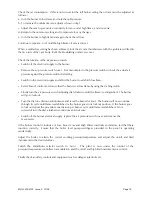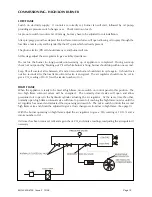
INTRODUCTION
This manual has been produced to enable users to install, commission and use MOL modulating burners
safely and efficiently. The manual covers two types of burner: High/Low and Modulating (Class D fuel). At
each stage the conditions which should be met and the adjustments and other actions which should be
carried out are detailed and the locations of the various components and adjustment mechanisms are
identified. Where appropriate, this information is supported by tables and graphs. Literature on the
proprietary components used in MOL systems is available on request.
FEATURES
Developed through extensive field experience in the UK and overseas markets, the MOL series meets the
current known test authority requirements in these markets and sets new standards in efficient and reliable
operation. MOL modulating burners are designed for flange mounting to the appliance frontplate and they
are delivered ready to install with a pre-wired packaged control system and oil pumping unit. (See Modes
1, 2 & 3:Page 9)
Burner Nominal Capacities
MOL 3400
3443 kW
MOL 4100
4132 kW
Controls and Safety Systems
MOL burners are fitted with an automatic sequence/flame failure control and photoelectric cell for
continuous flame supervision. A combustion air flow control coupled to an oil nozzle pressure control
system ensures smooth starting and optimum operating efficiency.
Operating Mode
In standard form the MOL Modulating burner can provide a turndown range of up to 3:1.
The High/Low version will be limited to a maximum of 2.5:1.
Fuels
MOL burners covered in this manual are designed to fire distillate fuel.
SITE CONDITIONS AND SERVICES
Flue and Chimney Requirements
It is important that:
The flue pipe from the appliance and the joint between this flue and the chimney are sealed to prevent
leakage of combustion products.
The flue pipe from the appliance does not protrude into the chimney beyond the inside wall.
The top of the flue or chimney shall be higher than any roof within a radius of 10 metres.
Checks are made to ensure that the chimney is suitable for oil fired appliances and that the proposed
installation complies with all Local Authority and other regulations covering such installations.
If more than one appliance is connected to a common flue or chimney the cross-section of this flue or
chimney should be adequate for the total volume of combustion products from the appliances. It is
recommended that each appliance should be exhausted into a separate flue.
Plant Room Ventilation
The burner must be supplied with dust-free air at sufficient rates for all firing conditions, in accordance
with the appropriate standards.
Existing Appliances
The appliance should be prepared for installation of the MOL burner by thorough cleaning, including the
removal of all adhering tar, scale and dirt. An inspection should also be carried out to ensure that the
appliance is in good condition. Any doubt about the appliances suitability for oil firing shall be referred to
the appliance manufacturer.
MOL 3400-4100 Issue 2 10/08
Page 7









































